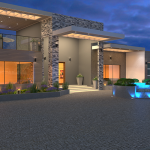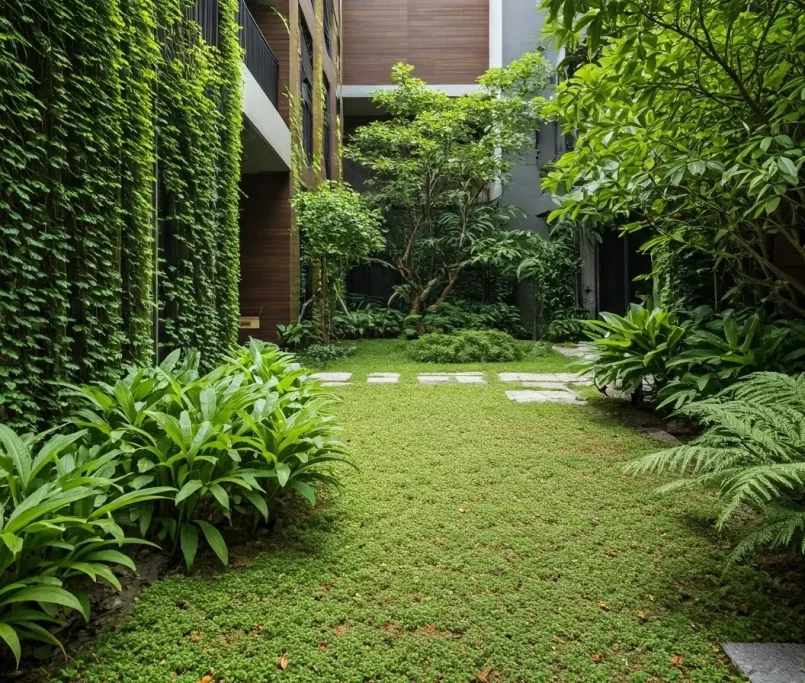Top 7 Tips for Integrating Sustainable Architecture into Your Next Project
Embracing sustainable architecture is no longer a trend; it’s a necessity. As the globe becomes more aware of the environmental impact of the construction industry, the push towards green building practices becomes paramount. Whether you are a seasoned architect or a budding designer, integrating sustainability into your projects can seem daunting. Yet, with some knowledge and creativity, it’s entirely achievable. This blog will walk you through seven essential tips to make your next project not only aesthetically pleasing but also environmentally friendly and sustainable.
1. Beginning with the Basics: Understanding Sustainable Architecture
Starting with the fundamentals, sustainable architecture involves designs that seek to minimize the negative environmental impact of buildings by enhancing efficiency and moderation in the use of materials, energy, and development space. Central to this approach is the ethos of ‘doing more with less,’ focusing on leveraging natural resources such as sunlight and rainwater to reduce the ecological footprint.
Moreover, at the heart of sustainable architecture is the concept of resilience. This involves creating buildings that can adapt to a changing environment, withstand natural disasters, and provide continued comfort and safety to its inhabitants. This holistic approach goes beyond merely using sustainable materials; it includes designing with future generations in mind.
2. Materials Matter: Choosing Sustainable Building Materials
Choosing sustainable building materials is pivotal. These materials are typically sourced from local, renewable, or recycled sources, reducing the environmental impact associated with transportation and disposal. For instance, bamboo, a fast-growing and versatile material, offers an excellent alternative to traditional hardwoods. In addition, advancements in technology have paved the way for innovative materials like recycled steel and glass, which not only support sustainability but also add aesthetic value to architectural designs.
3. Sunlight and Shadow: Maximizing Natural Light While Minimizing Heat Gain
Integrating natural light into your architectural designs can significantly reduce a building’s energy consumption. However, it’s crucial to balance the benefits of natural light with the challenge of heat gain. Utilizing design strategies such as strategic placement of windows, skylights, and shading structures can maximize light while minimizing heat. This not only conserves energy but also enhances the well-being of occupants by connecting indoor environments with the natural world outside.
The use of reflective materials and light-colored surfaces can further assist in reducing heat absorption, creating a cooler, more comfortable space without heavily relying on air conditioning. As a result, projects achieve greater energy efficiency and sustainability.
4. Energy Efficiency: Incorporating Renewable Energy Sources
To achieve higher levels of sustainability, integrating renewable energy sources, such as solar panels and wind turbines, into your designs is paramount. These systems can significantly reduce reliance on non-renewable resources and lower greenhouse gas emissions. Furthermore, incorporating passive design principles enhances a building’s natural heating, cooling, and ventilation, which can be complemented by the use of energy-efficient appliances and fixtures, sealing the building’s envelope from leaks, and using high-quality insulation.
5. Water Conservation: Implementing Efficient Water Use and Reuse Strategies
Water is a precious resource, and its efficient use and reuse are essential components of sustainable architecture. Techniques like rainwater harvesting, greywater systems, and efficient landscaping can significantly reduce water use. Installing low-flow fixtures and encouraging the use of native, drought-resistant plants in outdoor spaces also contribute to a project’s overall water efficiency. By adopting these practices, architects and designers can create systems that not only save water but also encourage a more sustainable relationship with our environment.
6. Green Spaces and Biodiversity: Designing with Nature in Mind
Incorporating green spaces and promoting biodiversity within architectural designs offer numerous benefits, including temperature regulation, improved air quality, and enhanced psychological well-being among occupants. These spaces can range from green roofs and walls to fully landscaped areas that support local flora and fauna. Such designs not only provide aesthetic and health benefits but also contribute to the resilience and sustainability of the built environment by creating natural habitats and promoting biodiversity.
7. Community and Connectivity: Fostering Sustainable Lifestyle Choices
Finally, sustainable architecture should aim to foster community and connectivity. This involves creating inclusive spaces that encourage walking, cycling, and the use of public transportation. By designing with community in mind, architects can help reduce carbon emissions associated with vehicular transport and promote healthier lifestyle choices. Additionally, integrating communal areas within projects can enhance social cohesion, making sustainable living not just a choice but a community venture.












